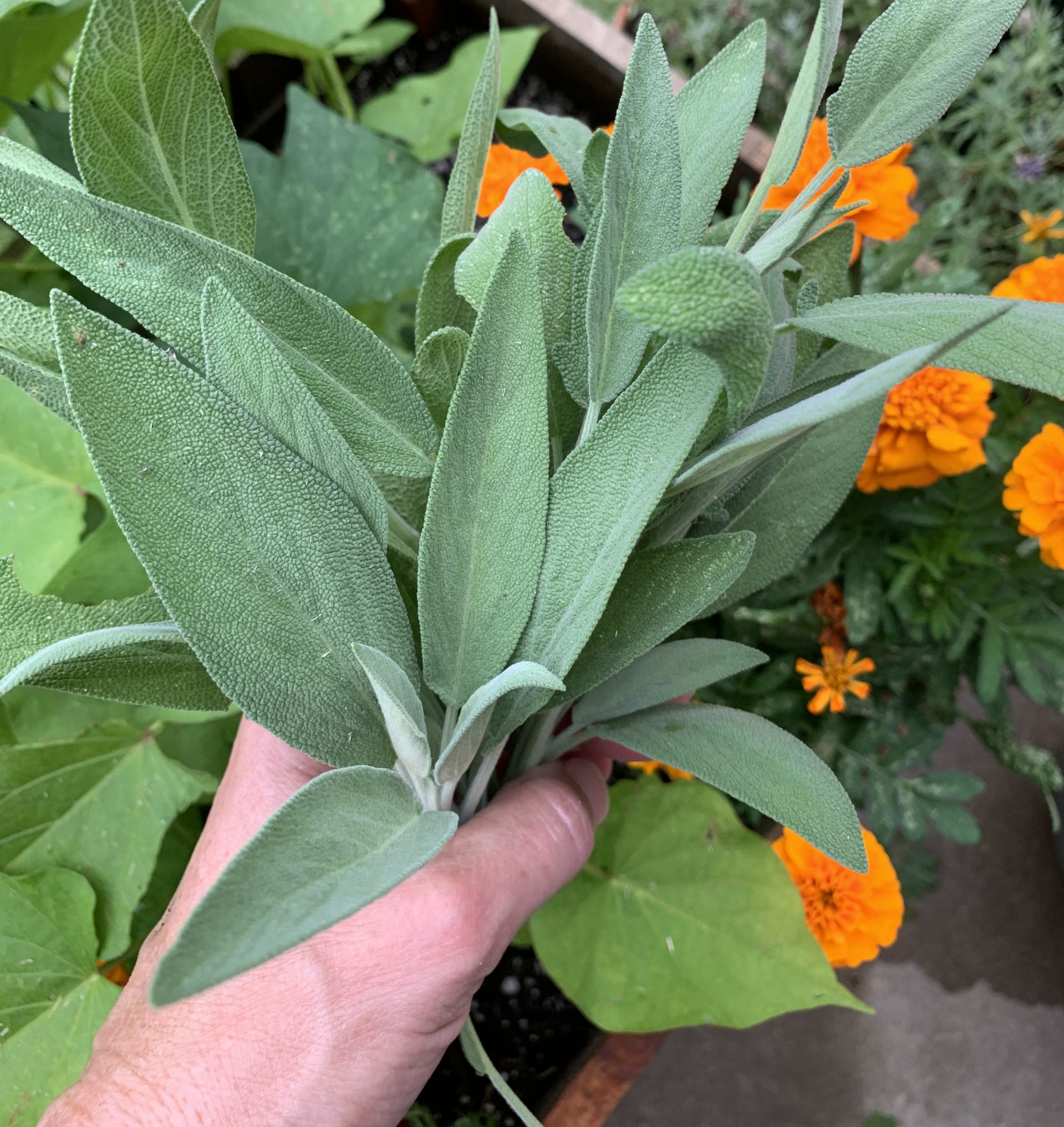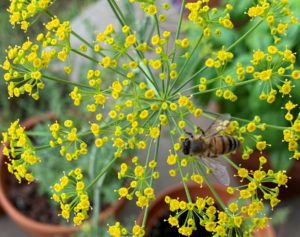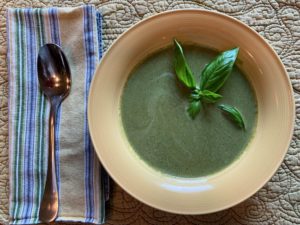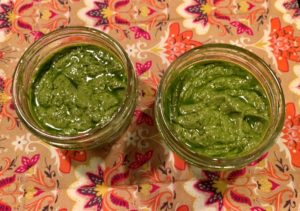Sage originated in the Mediterranean region, and it is known both for its culinary and medicinal uses. Salvia officinalis, also known as culinary sage, is used to season pork and poultry and often plays center stage in Thanksgiving recipes. The Latin name for sage means to save and to heal. It is no wonder, therefore, that the herb is said to lower both cholesterol and blood sugar levels, as well as to help relieve menopause symptoms. What’s more, it contains antioxidants that help fight cancer, and it is rich in vitamin K which means it can aid in blood clotting.
This beautiful perennial boasts gray-green, slightly fuzzy, flat leaves and tall stemmed flowers that provide blooms in purple, pink, white, and blue in the early summer months.
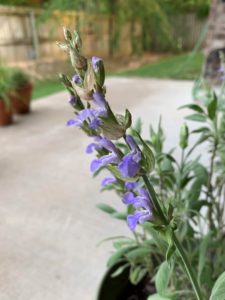
Like thyme, oregano, and basil, sage is a member of the mint family. It is similar in taste to marjoram, another member of the mint family, but tastes milder.
This article contains affiliate links. If you make a purchase using one of these links, I will receive a very small commission at no additional cost to you, and it will help me maintain this website. Rest assured, I only recommend products I actually like!
Seeds or Transplants?
Sage can be grown from seed but, like lavender, it can be challenging. For this reason, many forgo the frustration and purchase starts or transplants from their local nursery or big box store. If, however, you opt to plant seeds, plant them indoors in small pots by placing the seed about 1/8 to 1/4 inch (0.3 to 0.6 cm) deep in a loose organic potting mix several weeks before the last expected frost date. You will need to place them under a grow light and on top of a heat mat to create optimum growing conditions. The soil should be kept slightly moist but not soggy.
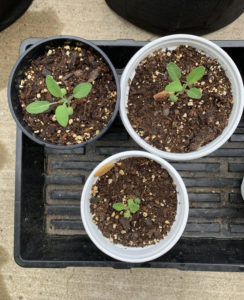
Alternatively, once the threat of frost has passed, you can sow the seed directly in a raised bed. Or choose a container that is about 8 inches (20 cm) deep and wide. Use a potting mix that has a soil pH between 6.0 and 7.0. Make sure the container has adequate drainage because sage roots cannot tolerate soggy soil. Be prepared to wait anywhere from two to six weeks for the seeds to germinate.
If using transplants, wait until the soil is 60-65o F (15 to 18o C) warm before planting. If you are unsure of the soil temperature, you can use a soil thermometer.
Whether seeds or transplants, plants should be spaced about 18 to 24 inches (45 to 60 cm) apart to provide adequate air circulation between them. This will help cut down on fungal diseases.
Sun and Water
For sage to reach its full flavor, it needs to receive six to eight hours of full sun. If you are growing in a hot climate, shade from the afternoon sun will prove beneficial.
Young sage plants need to be kept moist, but not soggy until they become established. More mature plants, on the other hand, should be watered when the top inch (2.5 cm) of soil becomes dry to the touch. Try to avoid getting the leaves wet as they are susceptible to getting mildew.
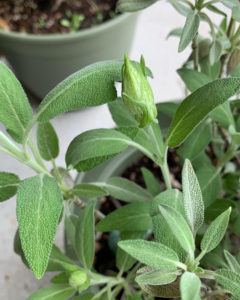
Propagate by Cuttings or Division
Another option is to grow sage using cuttings from an existing plant. Spring is the best time to cut a 4 to 6 inch (10 to 15 cm) stem just below a root node. Choose a younger stem that has not become woody, remove the lower leaves, and insert it into a small pot filled with organic potting mix. You can dip it in rooting hormone beforehand if you choose. Keep the soil slightly moist and place the cutting in indirect sunlight. Once new growth has appeared and is established, it is safe to transplant it in a raised bed or container.
Still another option during the spring or fall season is to divide an existing plant into two to four smaller pots, depending on the size of the root ball. Use a hand trowel or Hori hori to make the job easier. It is best to divide a younger plant before the stems become woody.
Fertilizer
Sage, like other herbs, is not a heavy feeder. Subsequently, it does not require much fertilizer after the spring months. Some report that too much fertilizer can diminish the herb’s taste.
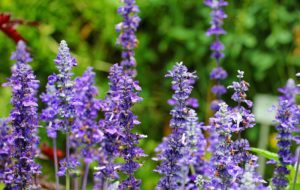
Sage and Neighboring Plants
Sage does not always make for a good companion. Avoid planting sage near cucumbers as its aroma can affect how cucumbers taste and reportedly stunt their growth. In addition, sage and basil may mix well in the kitchen, but in the garden, there can be a problem because their watering needs are different. Basil prefers moist soil, while mature sage does better in drier conditions. The same thing applies to sage and onions.
Conversely, sage does well when planted next to rosemary and lavender. It is also a good companion plant for cabbage, broccoli, cauliflower, Brussels sprouts, and kohlrabi because its aroma deters cabbage moths and flea beetles. It also helps to plant it next to carrots since it will deter carrot flies.
Pruning
Sage is considered a low shrub, nevertheless, it will help to prune it every spring. Cut the older, more woody growth to encourage new growth. You can also do minor pruning after it stops flowering.
If you want the plant to become bushier, pinch off the tips when the plant is young and only about 5 inches (13 cm) tall. Doing so will encourage it to branch out instead of putting its energy into growing taller.
Sage will slow its growth after about 3 to 5 years at which time some gardeners choose to replace it with newer plants.
Pollination
Sage blossoms will attract pollinators, especially butterflies and bees! This will in turn encourage the beneficial insects to pollinate your vegetable crops as well!
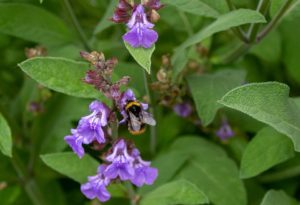
Pests and Diseases
Some of the diseases that may affect sage are rust, powdery mildew, stem rot, and root rot. Proper watering will help mitigate these issues.
Pests that may plague sage include whiteflies, aphids, spider mites, slugs, and spittlebugs.
How to Harvest Sage
You can harvest sage at any stage, but it is best to harvest very little during the first year so that it can mature and become established. After the first year, harvest as needed or harvest more robustly a few times each growing season. Just be sure not to harvest more than a third of the plant at any time.
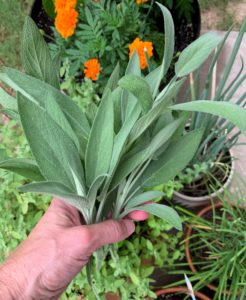
To maximize the harvest and preserve the best flavor, snip off the buds before they bloom. Stop harvesting once fall arrives so that the plant can prepare for hibernation.
Fresh leaves can be stored in bags in the refrigerator for a few days. Or mix leaves with olive oil and freeze them in an ice cube tray to use as needed.
For long-term storage, preserve the harvest by cutting stems, stripping off the leaves, and drying them in a dehydrator. Once, completely dry, store leaves in an airtight container in the pantry.
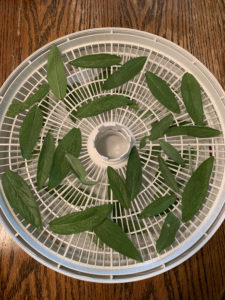
Varieties
When choosing a variety, keep in mind that not all sage is used for culinary purposes. Salvia officinalis (i.e., purple sage, tricolor sage, golden sage, a.k.a. Aurea sage) and Salvia elegans (i.e., pineapple sage) are edible, but some of the other cultivars are ornamental.
Sage makes an excellent addition to any herb, flower, or vegetable garden. Plant some today to enjoy tomorrow.
Thank you for reading this article! If you found it helpful, please consider sharing it with others via email and social media!
